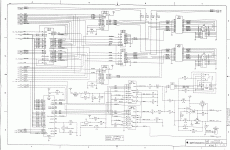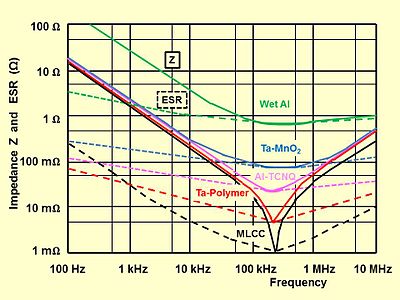JDW
Well-known member
Have any of you ever measured voltages at UB10 or UB11 (Sony chips) on an SE/30 motherboard? I don't have a long enough cable to safely pull out the motherboard to test that. I am specifically curious if capacitors C3, C4 & C5 see a maximum of 5V or 12V. I suspect one or more of those 3 capacitors do see 12V since the SE/30 schematic shows 12V going into those SONY chips at more than one location. A datasheet on those SONY chips would be wonderful, but I can't find anything like that.

The reason I ask about the voltages across C3, C4 & C5 is because I've been re-evaluating the tantalum capacitors everyone uses to recap SE/30 boards. Not everyone uses tantalum, but those who do, even Console5 tantalum cap kits, all use 47uF 16V rated caps. Whoever started that trend either didn't know about derating SOLID tantalum caps or they ignored that due to the fact the appropriately rated 25V 47uF solid Tantalum caps wouldn't fit the pads.
I know for a fact C9 & C10 do see 12V constantly. It's also a fact that Solid tantalum must be 50% derated. A 16V rated tantalum cap should never be used where the voltage is higher than 8V in its steady state condition, otherwise its failure probability will increase. This isn't speculation. It's on the datasheets. And with solid tantalums, the failure mode is a short circuit and a flame. That failure mode doesn't mean tantalum should never be used. It merely means tantalum must be used intelligently, with manufacturer recommendations properly understood and implemented. Indeed, there are tantalums used in military, space and medical applications (yes, even pacemakers) that can be used at their full rated voltage, but those are priced outside what most consumers can afford.
The good news is that polymer tantalums have only a 20% derating requirement, which means a 16V polymer tantalum can take 12.8V constantly and not have major reliability issues as per manufacturer datasheets.
I know C1, C7, C8, C12 & C13 only see 5V, so folks who have used solid tantalum 47uF 16V Solid Tantalum caps there are abiding by manufacturer specifications -- no problems with those. C9 & C10 are definitely out of spec though if 16V Solid Tantalum is used.
Again, I am curious to know if C3, C4 & C5 are out of spec too. If you've ever measured 12V at C3, C4, or C5, please let me know.
Thank you!

The reason I ask about the voltages across C3, C4 & C5 is because I've been re-evaluating the tantalum capacitors everyone uses to recap SE/30 boards. Not everyone uses tantalum, but those who do, even Console5 tantalum cap kits, all use 47uF 16V rated caps. Whoever started that trend either didn't know about derating SOLID tantalum caps or they ignored that due to the fact the appropriately rated 25V 47uF solid Tantalum caps wouldn't fit the pads.
I know for a fact C9 & C10 do see 12V constantly. It's also a fact that Solid tantalum must be 50% derated. A 16V rated tantalum cap should never be used where the voltage is higher than 8V in its steady state condition, otherwise its failure probability will increase. This isn't speculation. It's on the datasheets. And with solid tantalums, the failure mode is a short circuit and a flame. That failure mode doesn't mean tantalum should never be used. It merely means tantalum must be used intelligently, with manufacturer recommendations properly understood and implemented. Indeed, there are tantalums used in military, space and medical applications (yes, even pacemakers) that can be used at their full rated voltage, but those are priced outside what most consumers can afford.
The good news is that polymer tantalums have only a 20% derating requirement, which means a 16V polymer tantalum can take 12.8V constantly and not have major reliability issues as per manufacturer datasheets.
I know C1, C7, C8, C12 & C13 only see 5V, so folks who have used solid tantalum 47uF 16V Solid Tantalum caps there are abiding by manufacturer specifications -- no problems with those. C9 & C10 are definitely out of spec though if 16V Solid Tantalum is used.
Again, I am curious to know if C3, C4 & C5 are out of spec too. If you've ever measured 12V at C3, C4, or C5, please let me know.
Thank you!





